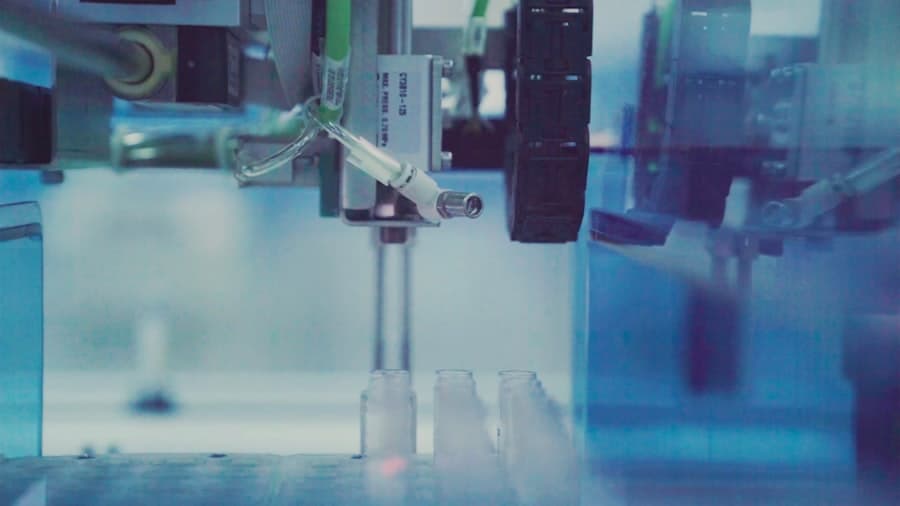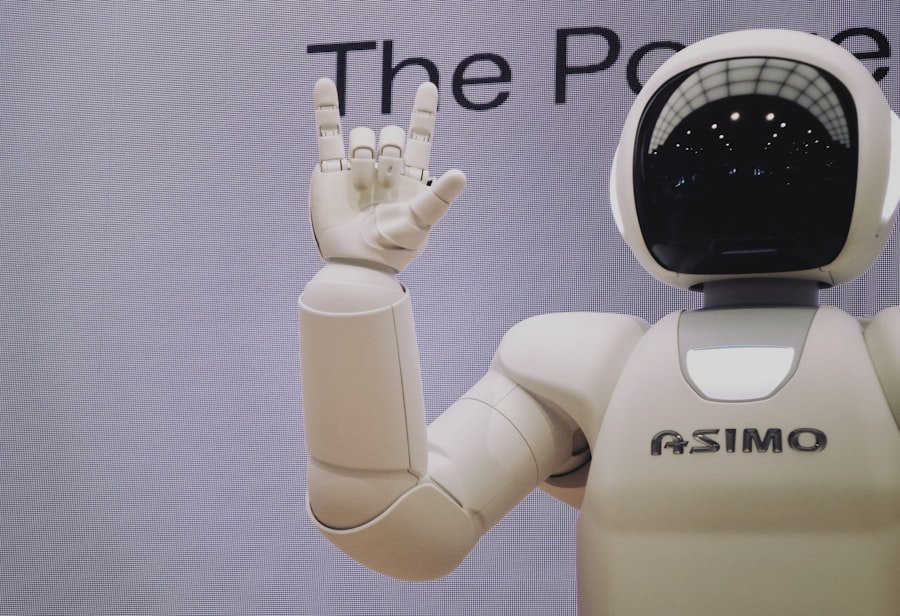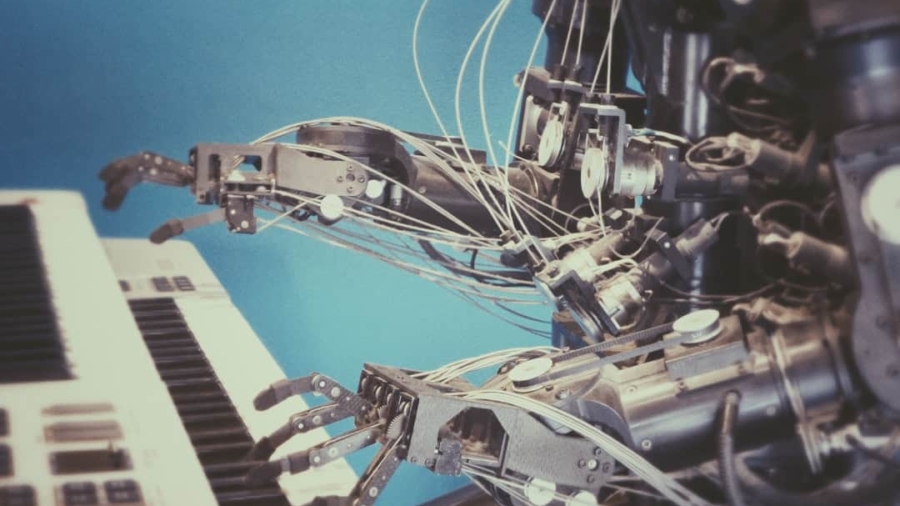In the rapidly evolving landscape of manufacturing and industrial operations, the role of predictive maintenance has emerged as a cornerstone for optimizing the performance and longevity of industrial robots. As these machines become increasingly integral to production lines, the need for effective maintenance strategies has never been more critical. Predictive maintenance leverages advanced analytics and real-time data to anticipate equipment failures before they occur, thereby minimizing downtime and enhancing operational efficiency.
This proactive approach not only reduces the costs associated with unplanned outages but also extends the lifespan of robotic systems, ensuring that they continue to deliver high levels of productivity. Moreover, the importance of predictive maintenance extends beyond mere cost savings. It plays a vital role in ensuring safety within industrial environments.
Robots, when malfunctioning, can pose significant risks to human operators and other machinery. By implementing predictive maintenance, organizations can identify potential issues early, allowing for timely interventions that prevent accidents and injuries. This focus on safety, combined with the economic benefits, underscores why predictive maintenance is not just an option but a necessity for businesses that rely on industrial robots.
Key Takeaways
- Predictive maintenance is crucial for industrial robots to minimize downtime and maximize productivity.
- Industrial robots consist of mechanical, electrical, and software components that require regular monitoring and maintenance.
- Predictive maintenance for industrial robots involves using sensors and data analytics to predict potential failures and schedule maintenance proactively.
- Implementing predictive maintenance for industrial robots can lead to cost savings, increased uptime, and improved overall equipment effectiveness.
- Common challenges in implementing predictive maintenance for industrial robots include data management, sensor reliability, and workforce training.
Understanding the Components of Industrial Robots
Industrial robots are complex machines composed of various components that work in unison to perform tasks ranging from assembly to welding and material handling. At the heart of these systems is the robotic arm, which typically consists of joints and links that provide the necessary range of motion. The joints can be rotary or linear, allowing the robot to maneuver in three-dimensional space.
Each joint is driven by actuators, which can be electric motors or hydraulic systems, depending on the application requirements. Understanding these components is crucial for developing effective maintenance strategies, as each part has its own wear patterns and failure modes. In addition to the mechanical components, industrial robots are equipped with sensors that provide feedback on their operational status.
These sensors can monitor various parameters such as temperature, vibration, and load, enabling real-time assessments of the robot’s health. Control systems process this data to ensure that the robot operates within its specified parameters. Furthermore, communication interfaces allow robots to connect with other machines and systems within a manufacturing environment, facilitating coordinated operations.
A comprehensive understanding of these components is essential for implementing predictive maintenance effectively, as it allows technicians to pinpoint potential failure points and develop targeted monitoring strategies.
How Predictive Maintenance Works for Industrial Robots

Predictive maintenance for industrial robots relies on a combination of data collection, analysis, and machine learning algorithms to forecast potential failures. The process begins with the installation of various sensors on the robot that continuously gather data on its performance metrics. This data can include information on vibration levels, temperature fluctuations, and operational cycles.
Once collected, this information is transmitted to a centralized system where it is analyzed using advanced algorithms designed to identify patterns indicative of wear or impending failure. Machine learning plays a pivotal role in this process by enabling systems to learn from historical data and improve their predictive capabilities over time. For instance, if a particular vibration pattern has been associated with a specific type of failure in the past, the system can flag similar patterns in real-time data as potential indicators of future issues.
This predictive capability allows maintenance teams to schedule interventions during planned downtimes rather than reacting to unexpected breakdowns. By understanding how different components interact and fail over time, organizations can create a more nuanced approach to maintenance that prioritizes critical areas while optimizing resource allocation.
Benefits of Implementing Predictive Maintenance for Industrial Robots
The implementation of predictive maintenance for industrial robots yields numerous benefits that significantly enhance operational efficiency and reduce costs. One of the most immediate advantages is the reduction in unplanned downtime. Traditional maintenance strategies often rely on reactive measures or fixed schedules that may not align with actual equipment needs.
Predictive maintenance shifts this paradigm by allowing organizations to address issues before they escalate into major failures, thereby keeping production lines running smoothly. Additionally, predictive maintenance contributes to cost savings by optimizing maintenance schedules and resource allocation.
This targeted approach not only conserves resources but also minimizes disruptions to production schedules. Furthermore, the extended lifespan of robotic systems resulting from timely interventions translates into lower capital expenditures over time, making predictive maintenance a financially sound strategy.
Common Challenges in Implementing Predictive Maintenance for Industrial Robots
Despite its clear advantages, implementing predictive maintenance for industrial robots is not without challenges. One significant hurdle is the initial investment required for sensor technology and data analytics infrastructure. Organizations must allocate resources for both hardware and software solutions capable of collecting and analyzing vast amounts of data.
For smaller manufacturers or those operating on tight budgets, this upfront cost can be a barrier to entry. Another challenge lies in the integration of predictive maintenance systems with existing operational processes. Many organizations may have legacy systems that are not compatible with modern predictive analytics tools.
This lack of interoperability can lead to data silos where valuable information is not shared across platforms, hindering the effectiveness of predictive maintenance initiatives. Additionally, there may be resistance from employees who are accustomed to traditional maintenance practices and may be skeptical about adopting new technologies. Overcoming these challenges requires a strategic approach that includes training programs, change management initiatives, and a clear demonstration of the benefits associated with predictive maintenance.
Best Practices for Successful Predictive Maintenance Programs

Data Collection and Integrity
The first step is to establish a robust data collection framework. This involves selecting appropriate sensors that can accurately capture relevant performance metrics while ensuring that data is transmitted reliably to analysis platforms. Regular calibration and maintenance of these sensors are also essential to maintain data integrity.
Collaboration and Communication
Another critical practice is fostering a culture of collaboration between maintenance teams and production staff. By encouraging open communication regarding equipment performance and potential issues, organizations can create an environment where predictive insights are valued and acted upon promptly.
Training and Continuous Improvement
Additionally, investing in training programs that equip employees with the skills needed to interpret data analytics can enhance the overall effectiveness of predictive maintenance initiatives. Furthermore, organizations should continuously evaluate and refine their predictive maintenance strategies based on performance outcomes. This iterative approach allows companies to adapt their practices in response to changing operational conditions or advancements in technology. By regularly reviewing key performance indicators (KPIs) related to equipment reliability and maintenance costs, businesses can ensure that their predictive maintenance programs remain aligned with their overall operational goals.
Case Studies of Successful Predictive Maintenance Implementation for Industrial Robots
Several organizations have successfully implemented predictive maintenance programs for their industrial robots, showcasing the tangible benefits of this approach. One notable example is a leading automotive manufacturer that integrated predictive maintenance into its assembly line operations. By deploying advanced sensors on robotic arms responsible for welding tasks, the company was able to monitor vibration levels and temperature fluctuations in real-time.
This proactive monitoring enabled them to identify wear patterns early on, leading to timely interventions that reduced unplanned downtime by 30%. The financial savings from decreased downtime were substantial, allowing the company to reinvest in further automation technologies. Another compelling case study comes from a global electronics manufacturer that faced challenges with its robotic pick-and-place systems.
The company implemented a predictive maintenance solution that utilized machine learning algorithms to analyze historical performance data alongside real-time sensor inputs. As a result, they were able to predict component failures with remarkable accuracy, leading to a 25% reduction in maintenance costs over two years. The success of this initiative not only improved operational efficiency but also enhanced product quality by minimizing defects associated with robotic errors.
The Future of Predictive Maintenance for Industrial Robots
Looking ahead, the future of predictive maintenance for industrial robots appears promising as advancements in technology continue to reshape manufacturing landscapes. The integration of artificial intelligence (AI) and machine learning will further enhance predictive capabilities by enabling more sophisticated analyses of complex datasets. As AI algorithms become more adept at recognizing patterns and anomalies within vast amounts of operational data, organizations will be able to predict failures with even greater precision.
Moreover, the rise of the Internet of Things (IoT) will facilitate seamless connectivity between industrial robots and other machinery within manufacturing ecosystems. This interconnectedness will enable real-time data sharing across platforms, enhancing visibility into overall system health and performance. As companies increasingly adopt smart manufacturing practices, predictive maintenance will evolve into an integral component of broader Industry 4.0 initiatives.
In conclusion, as industries continue to embrace automation and robotics, the importance of predictive maintenance will only grow. Organizations that invest in these advanced strategies will not only enhance their operational efficiency but also position themselves as leaders in an increasingly competitive market landscape.
If you are interested in exploring the best software for fault tree analysis in 2023, you should check out

